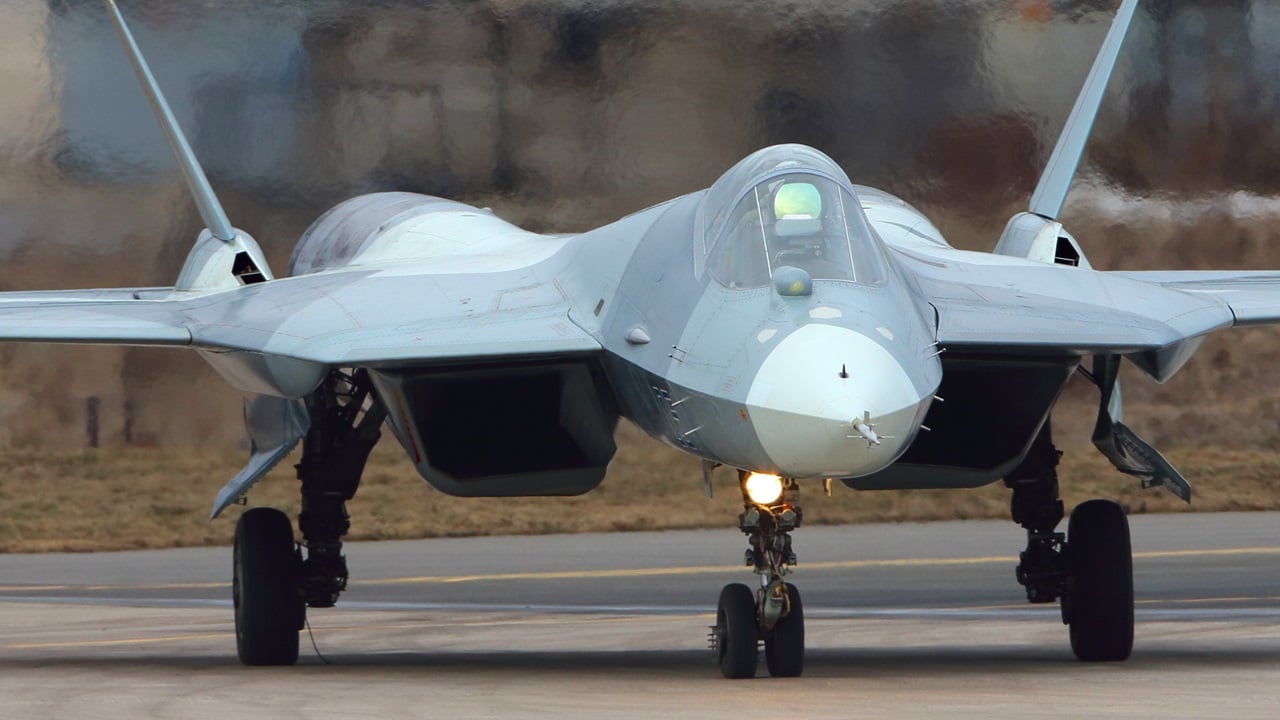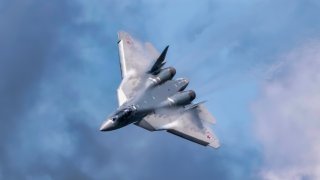Russia's Su-57 Felon Stealth Fighter Has 'Attacked' 40 Targets in Ukraine
Russia's advanced Sukhoi Su-57 stealth fighter has reportedly conducted more than 40 strikes against Ukrainian targets, according to an unnamed Ukrainian Air Force official cited by Defence Blog.
Summary and Key Points: Russia's advanced Sukhoi Su-57 stealth fighter has reportedly conducted more than 40 strikes against Ukrainian targets, according to an unnamed Ukrainian Air Force official cited by Defence Blog.
-While the UK Ministry of Defence previously noted limited use of the Su-57 since Russia's invasion in February 2022, its deployment appears to have increased in recent months.
-The aircraft has been used to launch cruise missiles like the Kh-69 from Russian airspace.
-Despite the increased activity, Russia struggles with production, delivering only a few new units that show signs of being outdated. Questions remain about the fighter's effectiveness and the authenticity of Russia's claims.
The Su-57 Felon Conducted More Than 40 Strikes on Ukrainian Targets
Russia's "most advanced multirole combat aircraft" has largely been absent from the skies over Ukraine, yet the Kremlin continues to tout the capabilities of the Sukhoi Su-57 (NATO reporting name Felon). In fact, there have been few "confirmed" reports that it has even been deployed in combat.
However, on Thursday the Defence Blog cited an unnamed Ukrainian Air Force official, who said the Su-57 may have been used in recent months to conduct "more than 40 strikes against" targets within Ukraine.
The report added, "These stealth fighters have become a more frequent tool in Russia’s aerial campaign, with increased missile strikes recorded since late February 2024. Although Russia had previously deployed the Su-57 sporadically, the intensity and frequency of its use have grown significantly."
According to the UK Ministry of Defence, the Russian Air Force's Su-57 had only been used a handful of times since the Kremlin launched its unprovoked invasion of Ukraine in February 2022.
Yet, as the Defence Blog claimed, this year the use of the Su-57 has increased considerably, with the aircraft being employed to launch more than "30 cruise missiles" including the "Kh-69 stealth cruise missiles, designed to destroy small, well-protected targets at ranges exceeding 180 miles." The outlet suggested that the missile was used on April 11, 2024, to destroy the Typillia Thermal Power Plant outside of Kyiv.
It has been confirmed that the Kh-69 was the type of ordnance used to strike the power plant, and was launched from outside of Ukrainian airspace. Past reporting didn't indicate what type of aircraft fired the missile, but it is known to be employed on the Su-57.
The subsonic cruise missile can also be launched from the Sukhoi Su-34 (NATO reporting name Fullback) and Su-35 (NATO reporting name Flanker-E/M) tactical aircraft.
The National Interest has been unable to confirm how many times the Su-57 has been used to launch missiles at Ukrainian targets, but it would seem that if this is the case, Russia continues to operate the fifth-generation multirole stealth fighter within its own airspace.

Even if the Su-57's role in the war has been limited – and 40 sorties for such an advanced aircraft during an active war seems underwhelming – Kyiv has made great efforts to target the stealth fighter. In June, Ukrainian drones reportedly destroyed one of the expensive Russian warbirds on the ground at the Akhtubinsk State Flight Test Center in southern Russia 365 miles from the Russia-Ukraine border.
Despite all the hype over the aircraft's capabilities, Moscow has struggled to produce the Su-57 in significant numbers. It was only this week that the latest "batch" of serially-produced fighters was handed over to the Russian Aerospace Forces – but based on photos shared on social media it would appear that batch consisted of just two or possibly three fighters.
The airworthiness of those jets has also been questioned, with the Daily Wrap alleging, "They do not look like new production but rather like factory leftovers for which the Russians finally managed to assemble the missing parts."
A dust-covered canopy, rust on the engine nozzles, and other wear could imply these were not "new machines," but were props for the latest United Aircraft Corporation (UAC) propaganda campaign – one that comes as the aircraft maker continues to court foreign buyers.
Author Experience and Expertise: Peter Suciu
Peter Suciu is a Michigan-based writer. He has contributed to more than four dozen magazines, newspapers, and websites with over 3,200 published pieces over a twenty-year career in journalism. He regularly writes about military hardware, firearms history, cybersecurity, politics, and international affairs. Peter is also a Contributing Writer for Forbes and Clearance Jobs. You can follow him on Twitter: @PeterSuciu. You can email the author: [email protected].
Image Credit: Creative Commons and/or Shutterstock.


